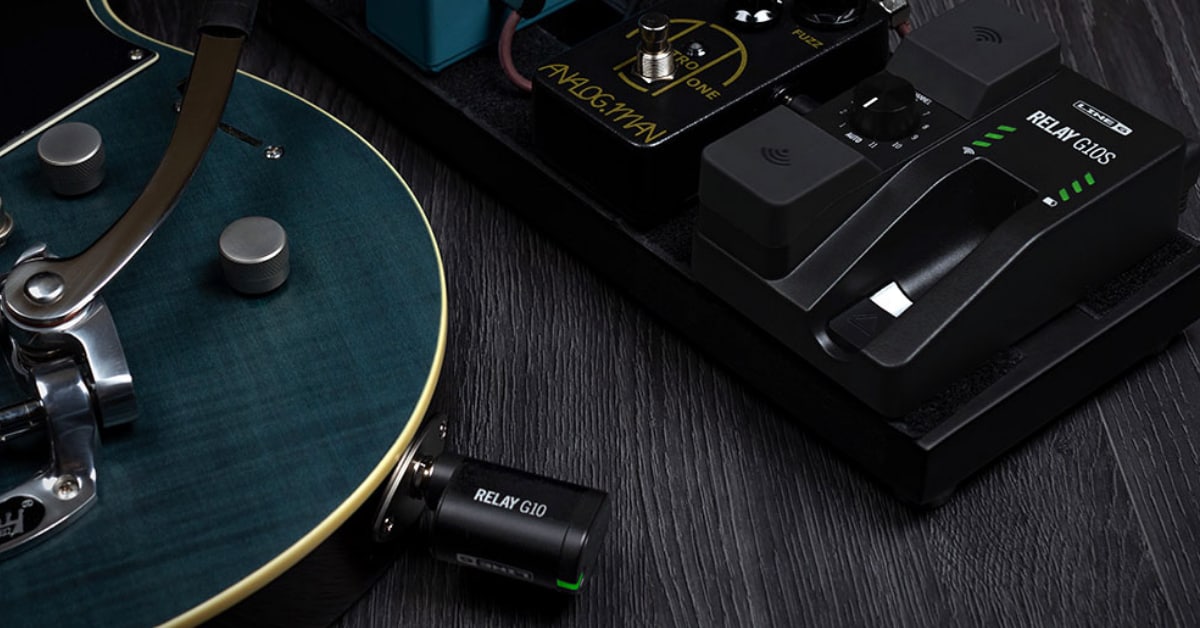Buying a wireless system may not seem as gratifying as getting a new guitar, which can offer different tonal possibilities and invigorate your playing with how it looks and feels; and it isn’t as justifiable as buying a new pedal, which can open up a whole new palette of textures and tone. In fact, the less a wireless system messes with your sound, the better. However, switching from a conventional cable to a wireless system inspires how you perform by literally unleashing you, allowing you to explore the stage and connect with your audience like never before.
Which wireless system is right for me?
When purchasing a wireless unit, you’ll need to take into account your needs and budget. You’ll need to figure out how much range (how far you can move away from the receiver before losing signal) you’ll need by considering the size of the stages you’ll be playing. Or if you’re buying the same system for multiple performers, you’ll need to make sure that the model can support that many units running at once. While most frequencies are free to use, depending on what country you’re in, you may need to acquire a paid license. You’ll also need to take into account if the transmitter works with your instrument jack since certain units don’t work with active pickups or onboard electronics.
If you’re looking for an option that allows you to simply plug in and play without having to worry about wearing a bodypack or mounting a receiver, the BOSS WL-20 and XVive U2 are both ultra-compact, easily rechargeable and very affordable solutions with a range suitable for small to midsize stages. If you are a player who gigs frequently and would like a more rugged solution with plenty of tweakable options, or if you play in a house of worship and need more range, the Sennheiser EW D1 and AKG DMS300 are rack-mountable digital units with a wider range and convenient features, like automatic channel selection. If you’re looking to save some real estate on your pedalboard, the Shure GLX-D16 and Line 6 Relay G70 offer pro-level features and reliability, plus come with space-saving, stompbox-sized receivers that have built-in tuners. And for touring professionals, the Shure Axient Series is a next-gen wireless ecosystem built to handle the biggest stages in the world, with encrypted signals and true digital diversity.
Will a wireless system affect my tone?
A lot of players are afraid to ditch their trusty cables when playing live because they fear a wireless system will change how their setup sounds and responds. While older systems were more susceptible to signal drop-outs or may have degraded your tone, the range of systems available today offer interference-free performance and can actually improve your tone. When using long cable runs or multiple pedals, you can easily lose several decibels of signal, especially in the higher frequencies. Most current wireless systems can help maintain the integrity of your tone, ensuring your signal stays clear and strong. If you’re used to the sound of a cable but just want the freedom to roam the stage, some wireless units emulate the sound and feel of using various lengths of cable—like the Line 6 Relay Series.
Is it worth buying a wireless system?
If the stages or type of music you play require you to remain mostly stationary, or if you’re primarily playing in a studio environment, perhaps it isn’t necessary for you to invest in a wireless system. But if you find that you consistently unplug yourself when performing, or that you’re holding back in any way because of fear of getting tangled up in your own setup or with other performers, investing in a quality system is definitely worth it. It may require a little research and setup beforehand, but once you experience the freedom a wireless unit offers you on stage, you’ll likely never go back to a cable again.




